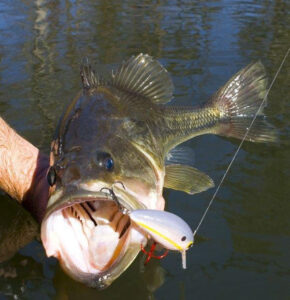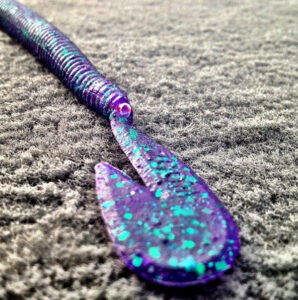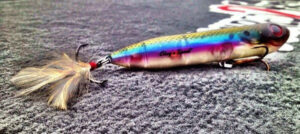One of the best parts of our job is when we have the privilege of communicating with our readers. We read every email and comment from our readers and we always appreciate and enjoy your feedback. Just as we hope to keep our readers up-to-date on the latest fishing information, we often learn some pretty cool tips from our fans as well. In the past few months, several of our readers have commented on our feature pieces with their own tackle modification ideas.
Being the bass fishing addicts that we are, we’ve tried many of these ideas and have been impressed with the functionality and simplicity of them. In order to keep you “in the know”, we have compiled a list of some of our readers’ simple ideas that will help you get the most out of your fishing day.
Double split rings on jerkbaits
Posted on Wednesday, December 05, 2012 7:21 AM by Michael Clifford on Short-Shank vs. Long-Shank Treble Hooks
Not every angler has the available tackle to quickly switch from short-shank to long-shank hooks, and that’s totally fine. If you’ve ever experienced the heartache and frustration of multiple short strikes when fishing with your favorite jerkbait, you may want to consider adding an additional split ring to it.
Just as a long-shank hook allows for better hookups on a jerkbait, double split rings will serve the same purpose if you don’t have a wide selection of treble hooks to choose from. In addition to giving the bass a better opportunity to get hooked, doubling up your split rings is also a great way to alter the buoyancy of your jerkbait in different water temperatures and conditions.
Spinnerbait blade dye for hooks
Red hooks are dyed red and it doesn’t take long for the red to come off of the hook, so get a bottle of red blade dye. you can dip the hook in the dye without taking the hook off the bait.
Posted on Wednesday, November 28, 2012 8:44 AM by Larry on When and Why to Use Red Hooks for Bass Fishing
With the right water clarity and sunlight, red hooks are a great way to get extra bites when the fishing is tough. It’s not always easy to get your hands on the right size or style of red hooks, but don’t worry—red spinnerbait blade dye makes for a very effective hook dye as well.
If you’re fighting the battle against short strikes, especially in time-sensitive situations, it’s a hassle to rummage through your terminal tackle box, untangle a big ball of sharp hooks and replace them all. Red blade dye saves a lot of time by allowing you to keep the hook on the bait and simply dip it into the dye—it’s that simple.
Don’t be concerned about the dye dulling the hook points, either. Blade dye is formulated to be extremely thin as to not alter the weight of spinnerbait blades. When you experiment with this modification, you’ll notice that the blade dye is no thicker than water.
Coffee stirrer in the tail of a Zoom Ultravibe Speed Worm
To get the paddle tail or any plastic worm tail up off the bottom, insert a thin, plastic coffee stirrer in the tail section. This creates an air pocket, raising the tail slightly off the bottom while giving the extra action often needed to entice a strike.
Posted on Friday, December 21, 2012 8:37 AM by Richard Ziert on Four Ways to Fish a Zoom Ultravibe Speed Worm
This simple tackle tweak can make a big difference on the water, especially when targeting pressured bass. As if the Ultravibe Speed Worm doesn’t make enough racket in the water, inserting a simple coffee stirrer into the tail of the worm will make it irresistible to big bass. To make it easier to insert the stirrer, simply dip it in the water to minimize any tearing.
Whether you’re fishing the UV Speed Worm weightless, Texas rigged or on a shaky head, this handy modification will get more bites. Not only does the coffee stirrer allow the tail to float when at rest, but it also creates a ton of bubbles as you drag or swim the bait in the water. Several of the best grass lake anglers have been doing this for years with consistent success.
Feathered treble hooks on walking topwaters
Great article! I also love to use walking topwater lures. I often change out the rear treble with a feathered treble hook to increase chances of a good hook up.
Posted on Friday, October 05, 2012 9:44 AM by David J. Gutierrez on Big Walking Topwaters in the Early Fall
There’s something about a feathered treble hook on the back of a topwater bait that big bass simply cannot ignore. In the fall and spring, bass see a plethora of topwater baits whizzing overhead every day and eventually become wise to them. In order to differentiate your offering from others, adding a feathered treble hook to the back of the bait can draw strikes from even the most finicky bass.
Because many bites on walking topwater baits can come while the bait is paused, feathered trebles are a great way to add a little more action to the bait while it’s at rest. As the bait sits in the water, the feathers quiver and pulsate with the movement of the water, making it a tantalizing addition to any topwater bait.
Loop knot for “walking the dog”
A Loop knot also makes “walking the dog” easier for me.
Posted on Sunday, October 07, 2012 4:40 PM by Rollie Van Cleave on Big Walking Topwaters in the Early Fall
“Walking the dog” is an age-old technique that has caught big fish for years. Although it is possible to execute this retrieve with a generic Palomar knot, many anglers prefer a loop knot instead. Because the loop knot allows the bait to move more freely, anglers are able to perform a wide-walking presentation with the slightest twitch of the rod tip.
If you’re just learning this technique or if you’re tired of jerking your shoulder out of socket to make your favorite topwater walk, this simple tweak is a must-try in our book.
We cannot thank our readers enough for the constant support and feedback over the years. As we continue to do everything in our power to help you become better anglers, we hope that you keep the lines of communication open with more awesome tips and suggestions. Thank you for being Wired2Fish!
















